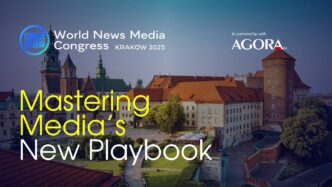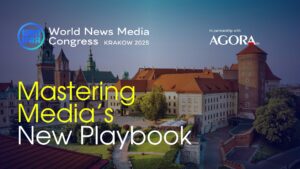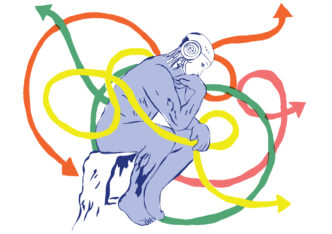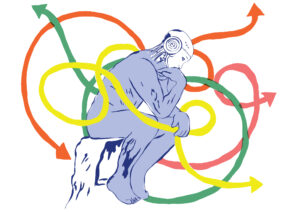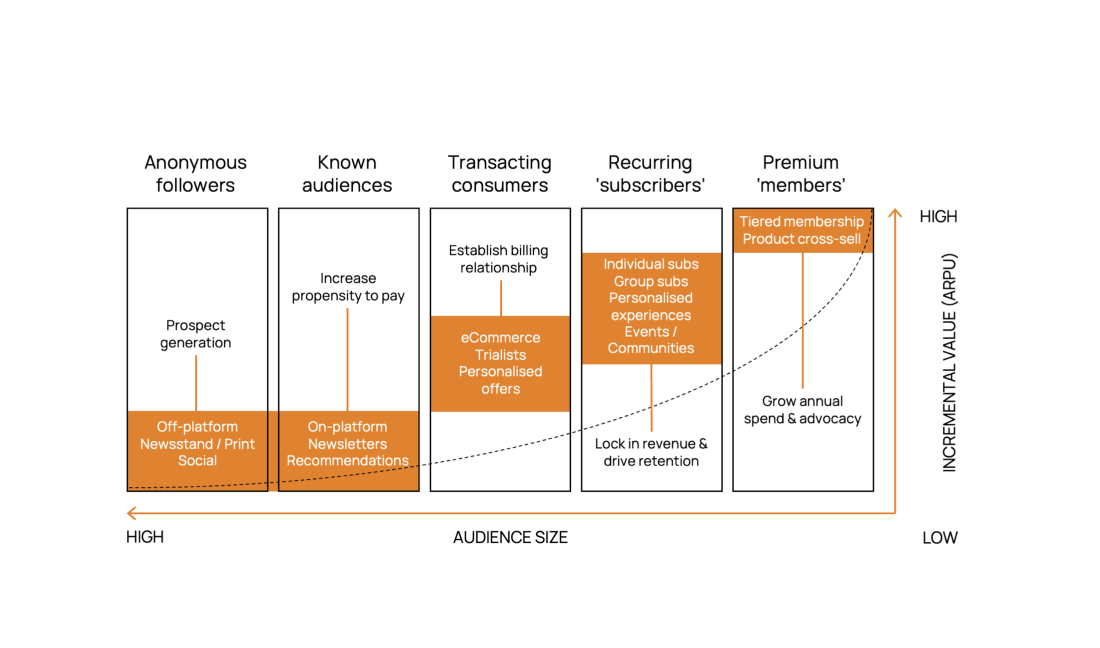

This article is a summary of Manifesto Growth Architects' Engagement Economics report, which is based on research involving 50+ media organizations.
Engagement is widely recognized as a good thing, but unfortunately remains a vague term. Audiences interact with brands and channels in different ways, for different reasons; from high frequency daily news and social media to lower frequency monthly magazines or weekly podcasts.
As a result there’s no universal measure that works for everyone and there’s no silver bullet for getting it right. So it’s no wonder that many media businesses are wrestling with how to define, and use, it successfully.
As many businesses pivot away (or already have) from a purely ad-based model that prioritise eyeballs, they’ve typically turned to RFV (Recency, Frequency & Volume) as a measure. As the market landscape continues to change though, increasingly they’re incorporating a slightly different set of factors:
- Depth: the level of emotional attachment that a customer has for a proposition or brand. It’s typically measured through volume of interactions (dwell time, viewing hours etc) and sentiment (measured through surveys / indices such as NPS)
- Breadth: the range of products and services that each customer engages with. Typical measures include cross-product holding & active cross-product usage
- Frequency: whether customers are establishing repeat usage habits with a proposition. Typical measures include repeat visit rates & active days usage, although the cadence of these habits will vary depending on the nature of the product or service
However, measuring engagement is only useful if there’s a clear understanding of what audience action is the target outcome, and how this ties to the pounds, shillings and pence.
Although commercial models vary across the media landscape, most align (broadly speaking) to the value curve shown below:
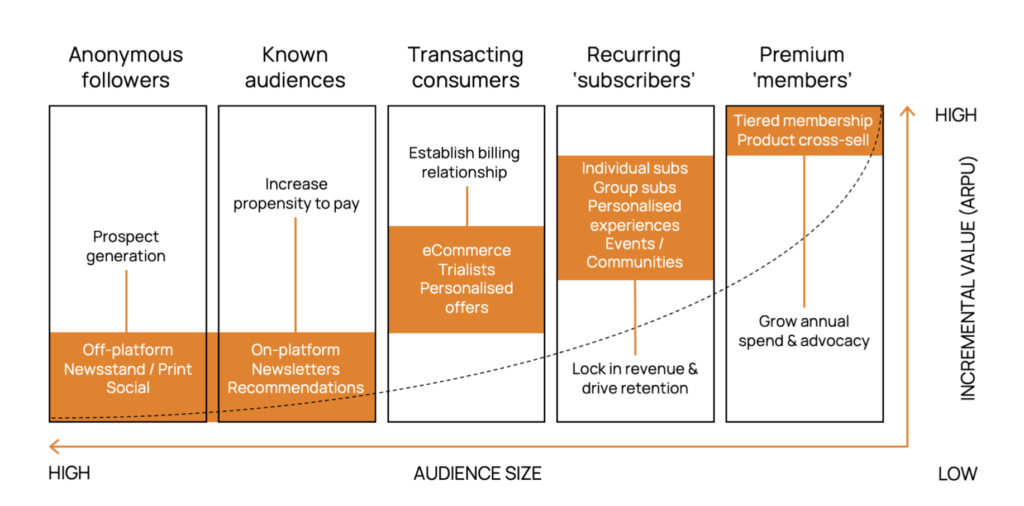
Engagement generates value by moving customers UP and RIGHT on this curve.
Moving customers UP in each stage generates increasing usage, customer data and advertising inventory. This can create significant value on its own, but also enables the development of richer customer profiles and habits that can be used to move customers from LEFT to RIGHT, growing customer value through transactions, subscription revenues and premium membership opportunities.
> To read next: What are the most valuable engagement metrics to measure in a subscription model?
Stage 1: Anonymous followers -> Known audiences
Whilst off-platform content discovery remains a critical way to attract new followers, it generates minimal customer value unless it can be converted into on-platform audiences.
Targeted traffic generation remains important to maximise digital advertising revenues, leading media businesses are focused on understanding and optimising the economics of prospect generation – targeting prospects with attributes that mean they have a high propensity to convert into subscribing customers over time.
At this stage, engagement can be connected to value in 2 ways:
- Quantifying the increased value of advertising inventory for known ‘high value’ audiences vs average CPMs
- Quantifying the increased propensity for known audiences to convert to transacting and subscribing customers over time
Stage 2: Known audiences -> Transacting customers
This is when engagement moves from a question of quantity to a focus on quality.
Once prospects have been identified, information on their needs and expectations starts to solidify. This allows for a change in focus of key engagement metrics, from being the number of times someone sees or responds to content to being more about the type of response and the relevance of that engagement.
It’s at this stage that businesses started to use metrics such as HQEs (high quality engagements) and habit (days engaging per week over a period of time) as key lead indicators of future conversion to paid subscriptions and membership.
> To add to your reading list: Registration wall benchmarks to better convert anonymous followers into known audiences
Stage 3: Transacting customers -> Recurring subscribers
This is where engagement consistently adds most value for both transaction and subscription-based businesses through loyalty and increased annual revenue per user.
A fundamental challenge to loyalty though is that it’s a lagging metric. By the time a churn problem has been identified, it is often too late, and so engagement should be used as a leading indicator of performance.
Understanding the engagement tipping point also becomes critical in developing the right value models. Increasing engagement can be correlated to improved retention up to a certain threshold of usage habit, but beyond it there are diminishing returns.
Stage 4: Recurring subscribers -> Premium ‘members’
The role of engagement changes again, now to focus on the most effective ways to grow the value of stable, recurring customer relationships.
Driving multi-product usage has the twin benefit of increasing overall retention rates and growing Annual Revenue Per User (ARPU). Understanding existing usage habits is one of the most important inputs into ‘Next Best Action’ models so that personalized product or content recommendations can focus on the right commercial priority.
But there’s (another) challenge when it comes to making all of this happen
Engagement is often seen as a job for marketing, because all too often the perceived desired outcome is acquisition and conversion. This cannot be further from the truth.
No one team or function can achieve the outcomes described above and so engagement is a team sport. Therefore, the cross-functional dots need to be connected and everyone needs to be clear on how they influence the selected metrics and what they need to do to shift the dial every day.
Digital platforms such as Facebook, Netflix and Slack have this alignment as part of their DNA with established engagement as a common objective and lead indicator across all of their teams.
For publishers, it involves aligning editorial, product and marketing around a common engagement goals for the different value stages, for example; editorial teams focus on content types and formats that drive repeat usage (rather than one-off views), product teams focus on features that build daily habits and marketing campaigns promote actions such as app downloads that correlate to improved engagement and retention.
In our experience working with national and international media clients, success is often determined by whether an organization can pull together as a single army working in step. The dial will only shift when the back office is powering the outcomes that the front office needs to drive.
Manifesto Growth Architects specialize in business models that grow audience engagement and value over time and help our clients build strategies that focus on deepening relationships. We’ve been named as one of The Financial Times leading management consultancies in the UK for the last 5 years.

